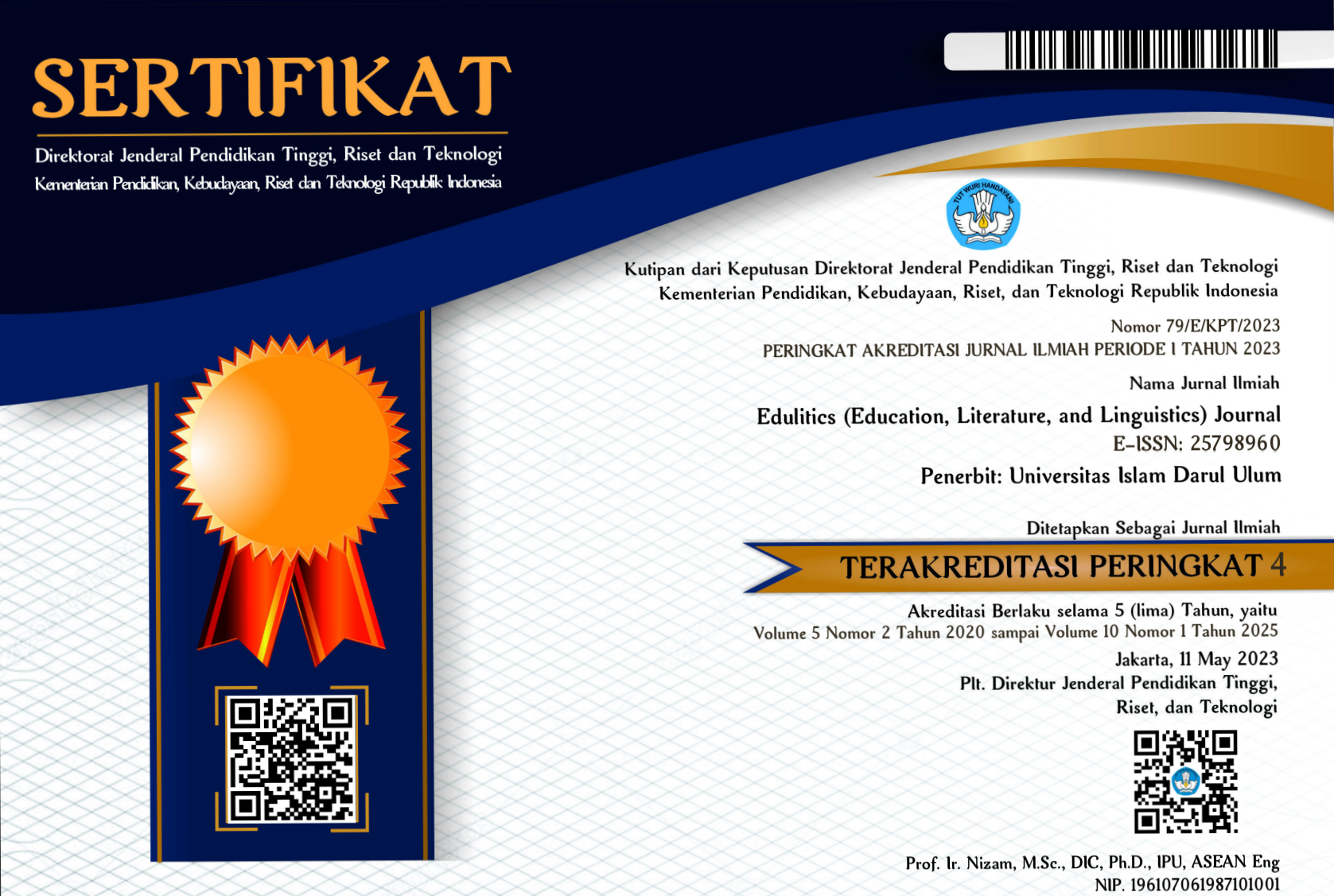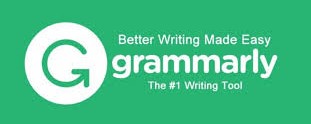The Correlation between Digital Literacy Skills’ Level and Frequency of Digital Media Use in ELT Classroom
Abstract
In this digital era, the era of a digital-dependent society, English teachers have to possess digital literacy skills (locating and consuming digital contents, creating digital contents, communicating digital contents) apart of master English language skills and pedagogical skills. The level of English teachers’ digital literacy skills is assumed to correlate to the frequency of digital media they used in ELT classes. Thus, to prove that assumption, the researcher conducted this study using a correlational research design. Self-assessment questionnaires were distributed to 24 English teachers in several regions in East Java. Then, the results showed that there was a significant correlation between the level of digital literacy skills and the frequency of digital media use in ELT classes. It leads to the conclusion that the higher the level of digital literacy, the more frequent digital media use in ELT classrooms. Knowing this, improving English teachers’ level of digital literacy skills matters
Downloads
References
Akayoğlu, S., Satar, H. M., Dikilitaş, K., Cirit, N. C., & Korkmazgil, S. (2020). Digital literacy practices of Turkish pre-service EFL teachers. Australasian Journal of Educational Technology, 36(1), 85–97. https://doi.org/10.14742/ajet.4711
Andeska, H. (2018). Teacher Perception on Digital Media Fluency in English Language Teaching: Expectation and Reality in Indonesian Context. International Seminar and Annual Meeting BKS-PTN Wilayah Barat, 1, 283–290. http://www.conference.unsri.ac.id/index.php/semirata/article/view/1061
Ary, D., Jacobs, L. C., & Sorensen, C. (2010). Introduction to Research in Education (8th Editio). Cengage Learning.
Azwar, S. (2012). Penyusunan Skala Psikologi Edisi 2 (2nd ed.). Pustaka Pelajar.
Carrasco, B., & Johnson, S. M. (2015). Hybrid Language Teaching in Practice (1st ed.). Springer International Publishing. http://link.springer.com/10.1007/978-3-319-16426-7
Chu, S. K. W., Reynolds, R. B., Tavares, N. J., Notari, M., & Lee, C. W. Y. (2017). 21st Century Skills Development Through Inquiry- Based Learning: From Theory to Practice. Springer Nature. https://doi.org/10.1007/978-981-10-2481-8
Dudeney, G., Hockly, N., & Pegrum, M. (2013). Research and Resources in Language Teaching: Digital Literacies (1st Editio). Routledge. https://books.google.ie/books?id=pMK3AwAAQBAJ&lpg=PA1&pg=PA2#v=onepage&q&f=false
Eshet-Alkalai, Y. (2012). Thinking in the Digital Era: A Revised Model for Digital Literacy. Issues in Informing Science and Information Technology, 9, 267–276. https://doi.org/10.28945/1621
Fatmawati, L., Sofeny, D., & Zahro, S. K. (2021). Students’ Attitudes Toward The Transformation of Online to Offline Learning in EFL Classroom. IJECA (International Journal of Education and Curriculum Application), 4(3), 264-272.
Hafner, C. A. (2020). Digital multimodal composing: How to address multimodal communication forms in ELT. English Teaching(South Korea), 75(3), 133–146. https://doi.org/10.15858/engtea.75.3.202009.133
Hiller A. Spires and Melissa E. Bartlett. (2012). Digital Literacies and Learning : Designing a Path Forward (five; Friday Institute White Paper Series, Issue June).
Hutagalung, B., & Purbani, W. (2021). The Ability of Digital Literacy for Elementary School Teachers. JPI (Jurnal Pendidikan Indonesia), 10(4), 710–721. https://doi.org/10.23887/jpi-undiksha.v10i4.32938
Jamalifar, G., & Chalak, A. (2014). the Use of Internet in English Language Learning: Practices, Attitudes and Challenges of the Learners. Advances in English Language and Literature (AELL), 1(2), 1–6.
Khan, I. U., Ayaz, M., & Faheem, M. (2016). The Role of Social Media in Development of English Language Vocabulary at University Level. International Journal of Academic Research in Business and Social Sciences, 6(11), 590–604. https://doi.org/10.6007/ijarbss/v6-i11/2444
Kurniawati, N., Maolida, E. H., & Anjaniputra, A. G. (2018). The praxis of digital literacy in the EFL classroom: Digital-immigrant vs digital-native teacher. Indonesian Journal of Applied Linguistics, 8(1), 28–37. https://doi.org/10.17509/ijal.v8i1.11459
Liza, K., & Andriyanti, E. (2020). Digital literacy scale of English pre-service teachers and their perceived readiness toward the application of digital technologies. Journal of Education and Learning (EduLearn), 14(1), 74–79. https://doi.org/10.11591/edulearn.v14i1.13925
Mardiana, W. (2020). Utilizing Digital Media in Efl Classroom: Pre-Service Teachers Teaching Practice Experience. Journal of English Teaching, Applied Linguistics and Literatures (JETALL), 3(1), 33–42. https://doi.org/10.20527/jetall.v3i1.7814
Mishra, P., Pandey, C. M., Singh, U., Gupta, A., Sahu, C., & Keshri, A. (2019). Descriptive statistics and normality tests for statistical data. Annals of Cardiac Anaesthesia, 22(1), 67–72. https://doi.org/10.4103/aca.ACA_157_18
Nugroho, C., & Nasionalita, K. (2020). Digital Literacy Index of Teenagers in Indonesia. Journal Pekommas, 5(2), 215–223. https://doi.org/10.30818/jpkm.2020.2050210
Perdana, R., Yani, R., Jumadi, J., & Rosana, D. (2019). Assessing Students’ Digital Literacy Skill in Senior High School Yogyakarta. JPI (Jurnal Pendidikan Indonesia), 8(2), 169–177. https://doi.org/10.23887/jpi-undiksha.v8i2.17168
Robert E. Botsch. (2011). Chapter 12. Significance and Measures of Association. http://polisci.usca.edu/apls301/Text/Chapter 12. Significance and Measures of Association.htm
Rusydiyah, E. F., Purwati, E., & Prabowo, A. (2020). How to use digital literacy as a learning resource for teacher candidates in Indonesia. Cakrawala Pendidikan, 39(2), 305–318. https://doi.org/10.21831/cp.v39i2.30551
Solikhati, H. A., & Pratolo, B. W. (2019). The Implementation of Digital Literacy in EFL Learning : A Case Study in SMP Muhammadiyah 1 Temanggung. Universitas Ahmad Dahlan.
Son, J., Robb, T., & Charismiadji, I. (2011). Computer literacy and competency: A survey of Indonesian teachers of English as a foreign language. Call-Ej, 12(1), 26–42. http://eprints.usq.edu.au/18371/3/Son_Robb_Charismiadji_Doc_18371.pdf
Statistics, L. (2018). Kendall’s Tau-b using SPSS Statistics. Laerd Statistics. https://statistics.laerd.com/spss-tutorials/kendalls-tau-b-using-spss-statistics.php
Sujoko. (2013). Pemanfaatan Teknologi Informasi dan Komunikasi sebagai Media Pembelajaran di SMP Negeri 1 Geger Madiun. Jurnal Kebijakan Dan Pengembangan Pendidikan, 1(1), 71–77.
Wiannastiti, M., Oktriono, K., & Simatupang, M. S. (2019). Digital literacy of ELT lecturers in different contexts: A case at two universities in Jakarta. ACM International Conference Proceeding Series, 515–519. https://doi.org/10.1145/3377713.3377805
Yolanda Xavier. (2021). L2 acquisition and digital media world : the importance of modern media tools in ELT Yolanda Xavier MA Dissertation in English Language Teaching February , 2021 [Universidade Nova de Lisboa]. http://hdl.handle.net/10362/119258
Zahro, S. K., Nashrullah, M. H., Novianto, A., Hutami, A. P., & Khoiriyah, I. (2022). Accelerating Children's Literacy Competence at Kalen Village through Assistance of Literacy-Based Activities. REKA ELKOMIKA: Jurnal Pengabdian kepada Masyarakat, 3(3), 160-168.

This work is licensed under a Creative Commons Attribution-ShareAlike 4.0 International License.
Authors retain copyright and grant the journal the right of first publication with the work simultaneously licensed under a Creative Commons Attribution-ShareAlike 4.0 International License that allows others to share the work with an acknowledgment of the work's authorship and initial publication in this journal.
Authors are able to enter into separate, additional contractual arrangements for the non-exclusive distribution of the journal's published version of the work (e.g., post it to an institutional repository or publish it in a book), with an acknowledgment of its initial publication in this journal.
Authors are permitted and encouraged to post their work online (e.g., in institutional repositories or on their website) before and during the submission process, as it can lead to productive exchanges and earlier and greater citation of published work.







_(1).png)


